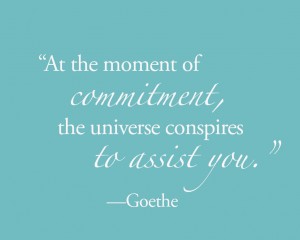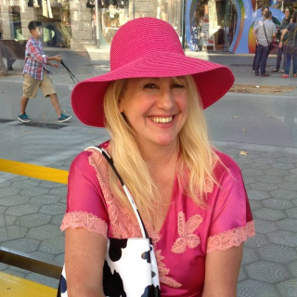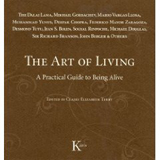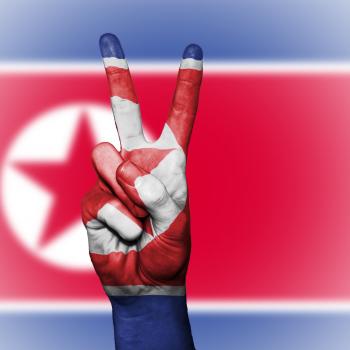 A few years ago, I had the privilege of writing a short essay that was included in The Art of Living: A Practical Guide to Being Alive. The book was the brainchild of Claire Elizabeth Terry, a British native now living in Barcelona, and one of the world’s most gracious people.
A few years ago, I had the privilege of writing a short essay that was included in The Art of Living: A Practical Guide to Being Alive. The book was the brainchild of Claire Elizabeth Terry, a British native now living in Barcelona, and one of the world’s most gracious people.
When Claire compiled The Art of Living, she had virtually no publishing contacts, yet she was able to create a book that included writing from Mikhail Gorbachev, actor Michael Douglas and the Dalai Lama. How did she do it?
By following five steps that, it seems to me, are all informed by Spirit. If you have a big dream in mind, these tips will get you where you want to go.
1. Find a big purpose, and let it be your driving force.
The Art of Being Alive started to take shape in Claire’s mind after the tsunami that occurred December 26, 2004. “Well over 350,000 people lost their lives,” Claire says, “and the thought occurred to me that, in honor of all those who lost their lives, it’s up to us who are left behind to live the best we can.”
Around the same time, she read Michael Palin’s book Himalaya, which got her thinking about how much we can learn from other cultures. When a friend suggested that Claire move forward with The Art of Living, “It was literally like a chink in the sky opened up,” Claire says. “It was, as they say in Spanish, encargada. You’re charged with or, as we say in Britain, commissioned with doing it. It was up to me whether to accept that commission.”
Claire said yes, beginning a project that would take four years and involve people from all over the world. “There were several times when I thought, ‘What’s the point?’” she says. “But it helped that I wasn’t doing it for me. I really felt commissioned to do it and also to raise money from the sales of the book to donate to charity.” (All of the profits from The Art of Living, including Claire’s royalties, are donated to Green Cross International, the environmental NGO founded by Mikhail Gorbachev.)
2. Remember what we all have in common.
“I used to think our cultures in the West had it mostly right and that we could just ‘add a little’ to that knowledge from Eastern religions such as Tibetan or Shinto Buddhists,” Claire says. “And then after reading Himalaya, I realized it could well be the other way around. We could all help each other with those aspects of being alive which we all have in common, regardless of our cultural or religious backgrounds.”
This became the founding principle of The Art of Living. “I thought about any child somewhere on the planet, and how wouldn’t it be great if we could present her with a book and say, ‘Look, here’s a guide with people from different countries and cultures pooling their resources and sharing their thoughts on the beautiful and mysterious art of being alive.’”
So what do all humans have in common? “We all need to eat,” Claire says. “We all need to keep clean. We all normally fall in love. Most of us have to earn a living. Breathing, seeing, dreaming…I tried to think of everything.”
Eventually she settled on 10 themes, including Art, Love, Reconciliation and Messages from Mother Earth, grouping the essays in the book under those topics.

3. Be, as the British say, “bloody-minded.”
That word means obstinate and tenacious—just the qualities needed to contact world leaders and celebrities from out of the blue.
When Claire accepted the spiritual commission to do the book, she had “to start roping people in,” she says.
Before long, she serendipitously met the president of the Friends of UNESCO in Barcelona, who agreed to help. He introduced her to the man who would eventually publish the book, and the contacts continued to build.
But it wasn’t all a breeze. Claire was a single mom with an 11-year-old son, Roberto, living in an apartment in Spain.
She started the book by going to internet cafés, where she’d make calls to the U.S. to solicit essays. When a foreign student gave Claire her old computer, she could work at home. “We’d have the TV on in the background,” Claire says. “Roberto would be talking and then throwing paper airplanes at my face to try to get my attention.”
Then there were the two years on crutches following surgery to have cartilage in her knee removed.
“I remember telling the publisher I’m getting this book done, come hell or high water,” Claire says. Since the book was meant to honor those who died in the tsunami, the publisher pointed out that it was “’a rather unfortunate analogy, Claire!’ We laughed, but he knew what I meant.”
4. See yourself as an equal.
So how do you reach out to well-known people and ask them to contribute their writing to a book by an unknown editor? Claire picked up the phone and made calls, finding creative ways to accomplish her goal.
When she wanted to approach Michael Douglas, for instance, she realized that going through his agent would end in closed doors. So she called his family’s hotel in Bermuda and asked to speak to the manager. Once she explained her project, the manager gave her the cell phone of Douglas’ personal assistant, and Claire had a submission from the actor three weeks later.
“It helped me to see that we’re all equal human beings,” Claire said, a thought that came in handy with other well-known people in the book. “Just because it’s Mikhail Gorbachev, for example, doesn’t mean that he’s any better or worse than you—you might admire someone for what they’ve accomplished, but in the end, they’re just another human being on the planet.
“I just thought that everyone has fallen in or out of love and had their heart broken. We’re all equally vulnerable. In other words, I saw myself as an equal. And because I wasn’t doing it for me, I think that helped as well.”
5. Don’t wait for confidence.
Claire says that completing the book taught her how to complete a project—to really see it through from beginning to end. “I’m naturally disgracefully undisciplined. Beforehand, I was always talking about ideas and not finishing them.”
In this case, though, she had people depending on her. Not only did she finish The Art of Living, but she’s gone on to write a novel and a screenplay. “I started giving myself very strict deadlines, using a writing system to help enable undisciplined Claire to do it. That was a huge personal advantage.”
So if you have a big dream, here’s what Claire recommends:
“First, decide that it really is your dream and you want to do it,” Claire says, referring to the Goethe quote: “At the moment of commitment, the universe conspires to assist you.”
“That quote was in my mind the whole time,” she says. “You have to be not hopeful, but rather, 100 percent determined. People will put you down or feel jealous or hurt. But things will start to happen as you take action. Don’t let anyone deter you. Try to be around people who support you. And don’t wait for confidence. That will come.”
Claire didn’t include a section on Tenacity in The Art of Living, but if she had, these would be the watchwords:
“Take action and do it,” she says. “It’s that simple. It really is that simple.”
Check out The Art of Living and Claire’s book I Draw Roses, which is being made into a major motion picture. You can also learn more about her latest project, a March retreat for screenwriters at a castle in Barcelona, at RocabertiWriters.com.












